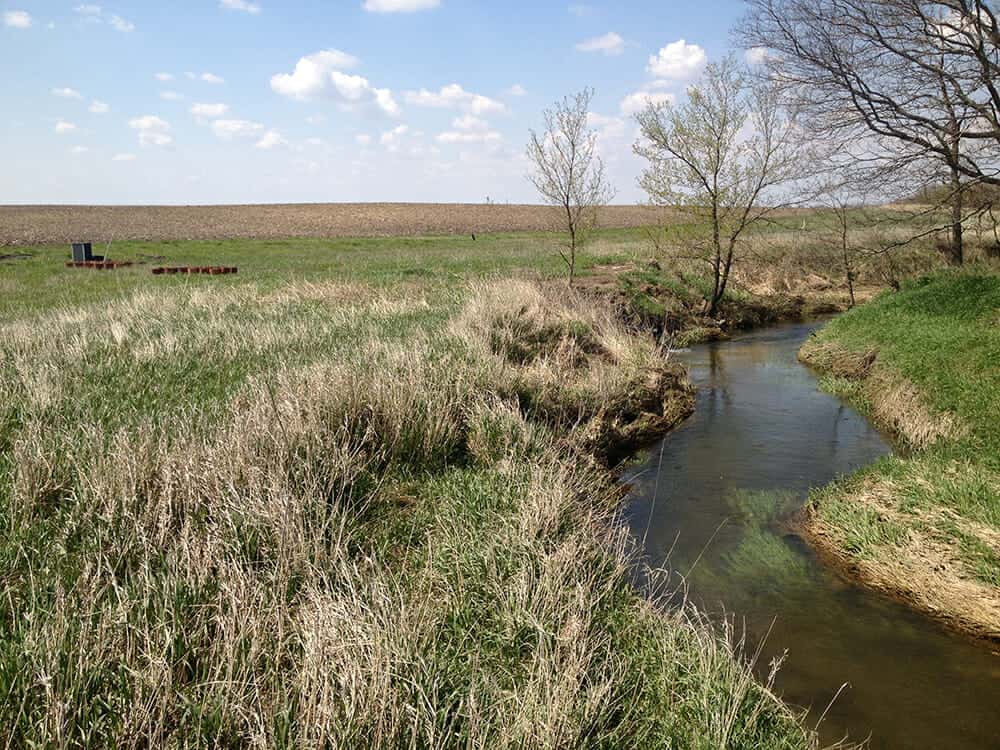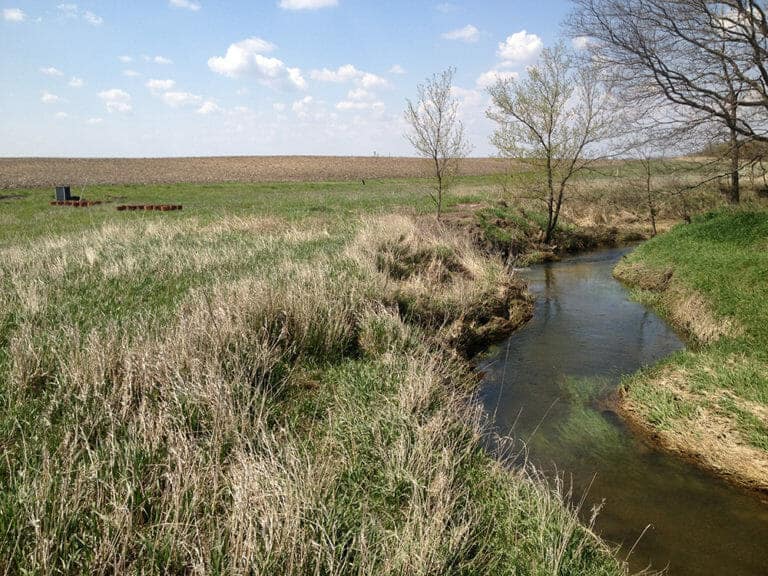Saturated buffer along unnamed tributary to the Skunk River, Iowa. Photo by Kent Heikens USDA, Agricultural Research Service.
Fertilizer used on Iowa cornfields is killing marine life, but one scientist found an affordable way to put an end to the pollution.
There’s a 6,475-square-mile “dead zone” in the Gulf of Mexico. Roughly the same size as Connecticut and Rhode Island, this area located off the Louisiana coast becomes so polluted that it can’t support the fish and shrimp populations that are vital to southern fisherman. While actions by those living in the bayous play a part, the real cause is located 1,000 miles north: Iowa’s golden cornfields, whose runoff is dirtying the Mississippi River and its tributaries, says Dan Jaynes, a research soil scientist at the U.S. Department of Agriculture’s National Laboratory who’s studying ways to decrease the contamination.

While the prairie’s black soil is extremely fertile — roughly 25 million acres of cropland were harvested last year — the former swampland is also excessively moist. “It’s a fairly flat landscape, so water has no place to go,” Jaynes says. That’s why, beginning a century ago, farmers in the Hawkeye State built artificial drainage systems (that consisted of four-inch-wide clay pipes buried a few feet underground; today, perforated, plastic tubing is used) to shunt water into streams.
Today, these small-scale systems add high levels of nitrates (a form of nitrogen) and phosphorous (additives that largely come from fertilizer) to nearby waterways. During the spring, these nutrients fuel algal growth, presenting a health hazard to the many cities like Des Moines and Cedar Rapids that obtain their drinking water from the rivers. (Des Moines’s water utility has filed a controversial federal lawsuit against drainage districts upstream.)
Jaynes has a simple solution to the problem that’s impacting the entire Midwestern Corn Belt, from Ohio to southern Minnesota: just shift […]
Full article: This Easy Fix is How You Stop Poisoning the Fish in the Gulf of Mexico



